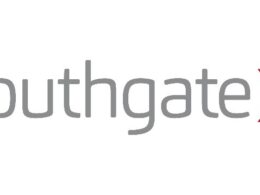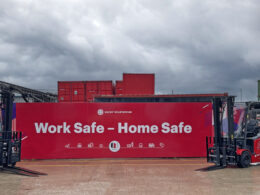 If you’re a logistics operator, retailer, manufacturer or in healthcare you’ll know only too well how transporting goods through the supply chain requires accurate, detailed and timely data. It relies on there being no weak links in the chain, yet invariably the weakest link of all is the barcode label!
If you’re a logistics operator, retailer, manufacturer or in healthcare you’ll know only too well how transporting goods through the supply chain requires accurate, detailed and timely data. It relies on there being no weak links in the chain, yet invariably the weakest link of all is the barcode label!
Labels are the link between organisations, their customers, consumers, partners and regulators so it’s important that they’re correct and legible in order to control costs and maintain business reputation. Barcode labels, and the printers that generate them, play a pivotal role in creating a smooth supply chain. So how do you know when it’s time to upgrade from your desktop printer, or conversely downsize from a heavy industrial model still clunking along on outdated technology?
If you’re printing over 500 labels a day from a desktop unit you’d probably notice real advantages in terms of processing, scalability, connectivity and ease of operation by stepping up to a mid-range printer. At the other end of the size spectrum, the outdated technology of legacy machines may be costing you more than you think.
In back office environments of retail distribution centres, warehouses and manufacturing plants, mid-range devices — the sort that typically produce 4”, 6” and even 8” labels — are probably the biggest growth area in the world of barcode printers as customers look to either step up from desktops or scale down from heavy duty models.
Printer manufacturers like Zebra, Intermec, Datamax and Printronix have developed a number of mid-range models that are incredibly compact, easy to use and built in strong metals to withstand the demands and harsh environments of industrial uses. These machines have a small footprint and are ideally suited to space-restricted areas and mid to high volume, diverse applications, from pharma/biotech tracking and blood bag labelling in laboratories to food service distribution and automotive manufacturing.
Most of these mid-range printers come equipped with more connectivity as standard than any other type of printer; USB, Ethernet, Serial and Bluetooth, with Wi-Fi optional on many. Onboard video tutorials reduce workforce training and high-resolution text and graphic displays make for easy reading, even in poorly lit environments.
In this age of smart technology it’s easy to overlook the significance of the humble barcode. Its pre-printed presence on packaging is largely policed well by marketing departments but it’s in the factory and shipping areas of businesses where problems can occur if little attention is paid to the security, quality and legibility of barcodes on outgoing cartons, boxes and pallets.
Regulated industries depend on labelling to keep an audit trail, particularly where human health and safety is concerned. So what looks like a relatively small issue i.e. the label can cause significantly large and costly problems in terms of downtime, compliance fines and reputation if not done accurately.
If you’ve had calls from customers complaining about poor legibility or scanning problems with barcode labels, maybe it’s time to check not just your label stock for durability and fit for purposeness but also the machines that print them, and just maybe it’s time to say goodbye to the weakest link!
Find out more about mid-range printers at www.datatrade.co.uk













